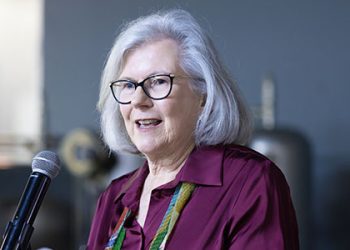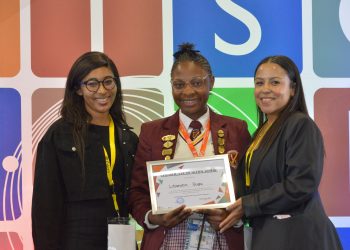Rhodes University (RU) reached one scientific milestone recently when it launched a radio telescope project that will provide a dynamic learning platform for STEM. The project will add value and plug into the existing infrastructure of the Square Kilometre Array (SKA) into which South Africa has invested so much.
Low-cost and open-source facility
Called Transient Array Radio Telescope (TART), the facility was officially unveiled by the dean of science Professor Tony Booth at the Waainek site last week. The TART is a low-cost, open-source 24-element radio interferometer and it was initially designed by Dr Tim Molteno and his group at the University of Otago in Dunedin, New Zealand. The group designed it to provide a test-bed for developing and testing state-of-the-art calibration and imaging algorithms for radio astronomy.
Product of brainstorming session
According to Professor Booth, both the construction and deployment of the TART are collaborative initiatives between RU, the University of Otago, and Stellenbosch University. He said the idea of the project dates back to 2021 after a brainstorming session with SKA Research Chair (Centre for Radio Astronomy Techniques and Technologies) Professor Oleg Smirnov, Physics lecturer, Dr Stanley Kuja, mathematics lecturer, Dr Patrice Okouma (all from RU), and Dr Molteno from the University of Otago senior lecturer of Physics.
Dr Kuja, who served as a project lead engineer, supervised the installation and testing of the TART assisted by two brilliant young graduates. A specific contribution that the RU team made to the TART version was the layout, which consists of 24 movable antennas mounted along three beams arranged in the shape of a Y. This layout echoes the iconic Very Large Array (VLA) radio telescope (New Mexico, US), both in the shape and reconfigurability.
Effective teaching tool
More crucially, the TART will serve as a teaching tool to train students as well as assist with research in machine learning, and electromagnetic compatibility (EMC) metrology. Furthermore, it will promote community engagement in the form of STEM education for learners in the nearby schools in Makhanda.
“It’s a perfect instrument for learning and experimentation. Our South African flagship, MeerKAT, can be a little intimidating for students – competition for time is stiff, data volumes are huge, and the instrument itself is at a remote Karoo site. The TART is right here; it is very hands-on, and data is freely available to all,” said Professor Smirnov about the TART.
Giving students early exposure
According to the RU not only will the full deployment of the TART give students early exposure to the entire value chain of the SKA but it will also provide an avenue toward a holistic immersion into research and development early on. It is believed that until recently, the typical immersion of mathematics and computer science graduate students into engineering has been minimal.
In addition, continuous research and development on the electronic systems of the TART open up further training opportunities for staff and graduates and pathways towards costing the current capital expenditure on TART, including operational costs. For instance, in the current configuration of the project, RU provides electrical power, internet, and a secure site at Waainek.
“This setup will lay the ground for the intake of more postgrad students since TART provides data of significant value for testing various mathematics-based algorithms for radio interferometry as well as full-fledged state-of-the-art techniques in Machine Learning,” said Dr Okouma.
“Since radio frequency interference (RFI) is a major concern in radio astronomy, intelligent techniques in characterising RFI at the Waainek site can be transferred to the SKA-MeerKAT project,” said Dr Kuja.







